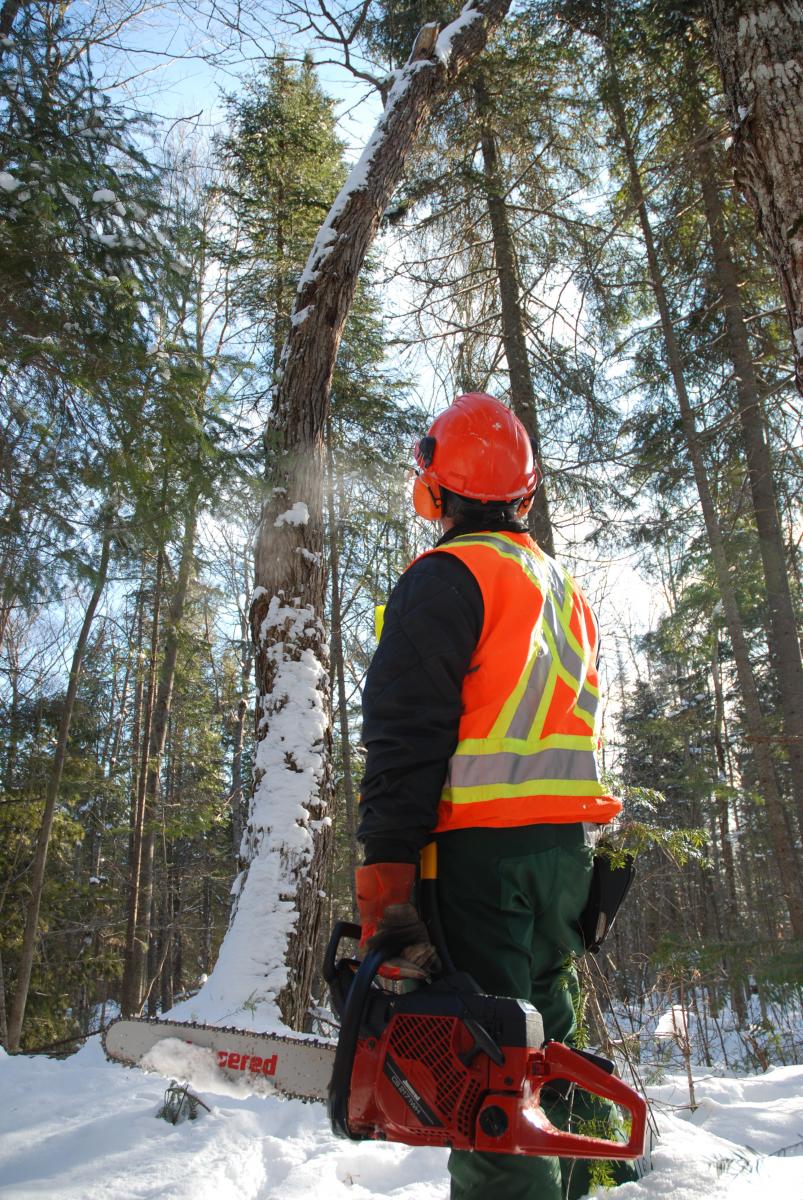No one witnessed the event
WSN Hazard Alert: Experienced cutter killed by freestanding tree - Download and share
What happened?
An experienced cutter-skidder operator working alone in a private woodlot was killed by a freestanding tree when it fell on him as he worked nearby. He was found by another worker in a facedown position, apparently having been struck from behind by the tree. The impact caused extensive internal injuries resulting in death.
Why did it happen?
No one witnessed the event. An analysis of the circumstances leading up to the injury revealed a number of factors that may have directly or indirectly contributed to the incident including the following:
-
The tree that struck the worker had been cut earlier by the worker along with four other felled trees, and apparently left standing. It appeared from the marks on the tree and on a supporting tree that the tree had been hung up for some time.
-
The worker was apparently limbing the first four trees that had been cut, and judging from his position, was in a direct path of the falling freestanding tree.
-
A skidder was parked nearby but there was no evidence that it had been used in an attempt to bring down the freestanding tree.
-
Based on the evidence of all the trees cut by the worker, including the tree that struck him, the stumps were all dutch cut, leaving no holding wood for control.
-
There was also evidence of other poor felling practices such as multiple chicots and stumps showing poor notching practices in the area – an indication that the worker may not have carried out safe operating procedures as required in a conventional logging operation.
How could the incident have been prevented?
Chicots, hang-ups and freestanding trees can be deathtraps. If you enter a work area or work within the danger zone of a chicot, hang-up or freestanding tree, you are exposing yourself to the danger of an uncontrolled falling tree.
Chainsaw and skidder operators in a logging operation must be certified in the Ministry of Training, Colleges and Universities mandatory Cutter Skidder certification training program and must receive workplace specific training by their employer in all aspects of the work they perform, including policies and procedures for safe felling of problem trees and other cutting hazards that might arise when working alone.
Freestanding trees must be addressed immediately by the worker creating this hazard, or the worker must stay with the tree until the skidder is available to push the tree down. Other problem tree hazards must be safely felled before continuing on with any other activities in the area.
The leading cause of death and serious injury to people cutting timber is still the most obvious one – being hit by a falling tree. Not every tree you want to fell will be a perfect specimen, plumb or straight up and down, and without complications. Some will lean too far, others may be unbalanced, bound in with other trees, uprooted by wind or growing beside a boulder. Every chainsaw operator working in the woods encounters problem trees every day that require special attention and techniques to be felled safely.
How WSN helps
As your health and safety specialist for Ontario’s forestry sector, WSN offers training, resources, risk assessment, and safety auditing.
Designed for a professional audience, but of interest to anyone with a saw, WSN’s updated Felling Problem Trees video looks at eight specific types of problem trees and demonstrates the proper felling techniques for each. Felling Problem Trees is part of Workplace Safety North’s Introduction to Professional Chainsaw Operation training program.
For more information on safe, professional chainsaw operation, please call toll-free in Ontario 1-888-730-7821.
Workplace Safety North
Every worker, home safe and healthy.

